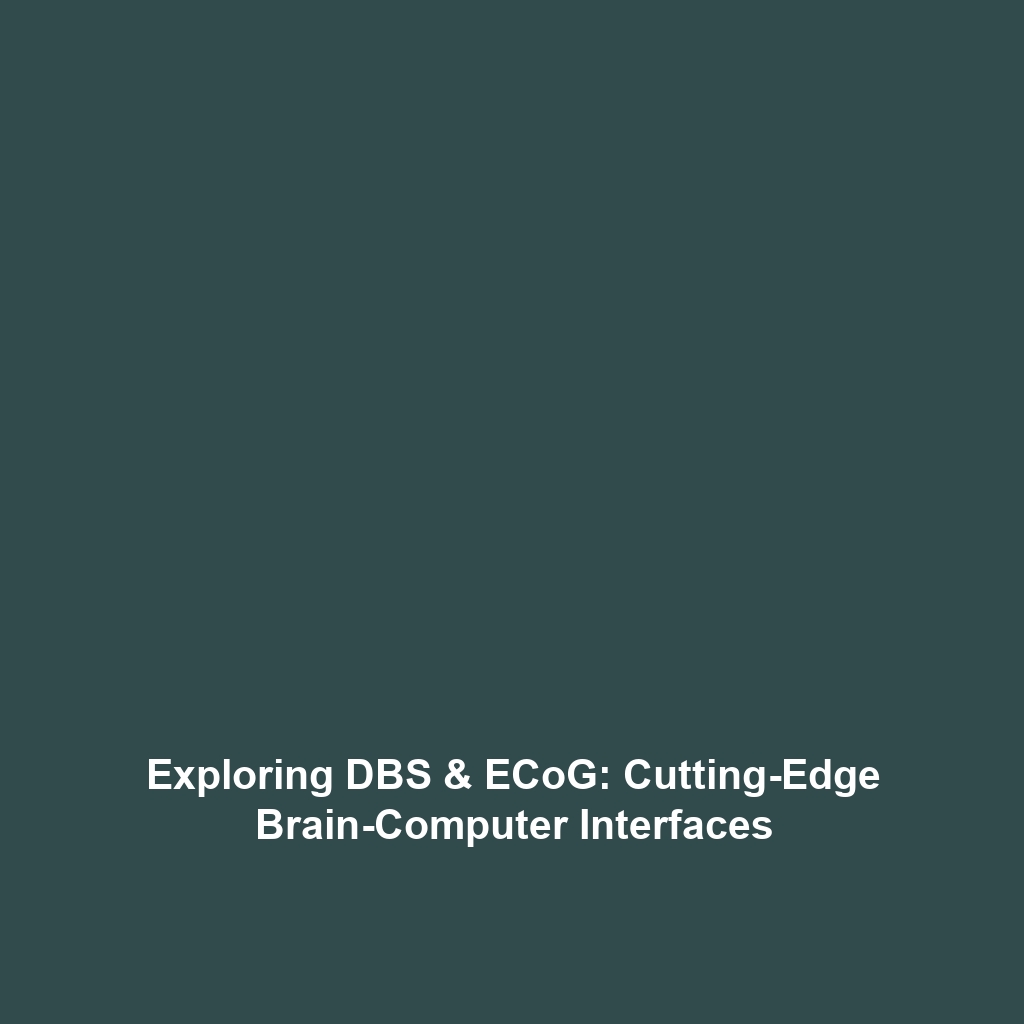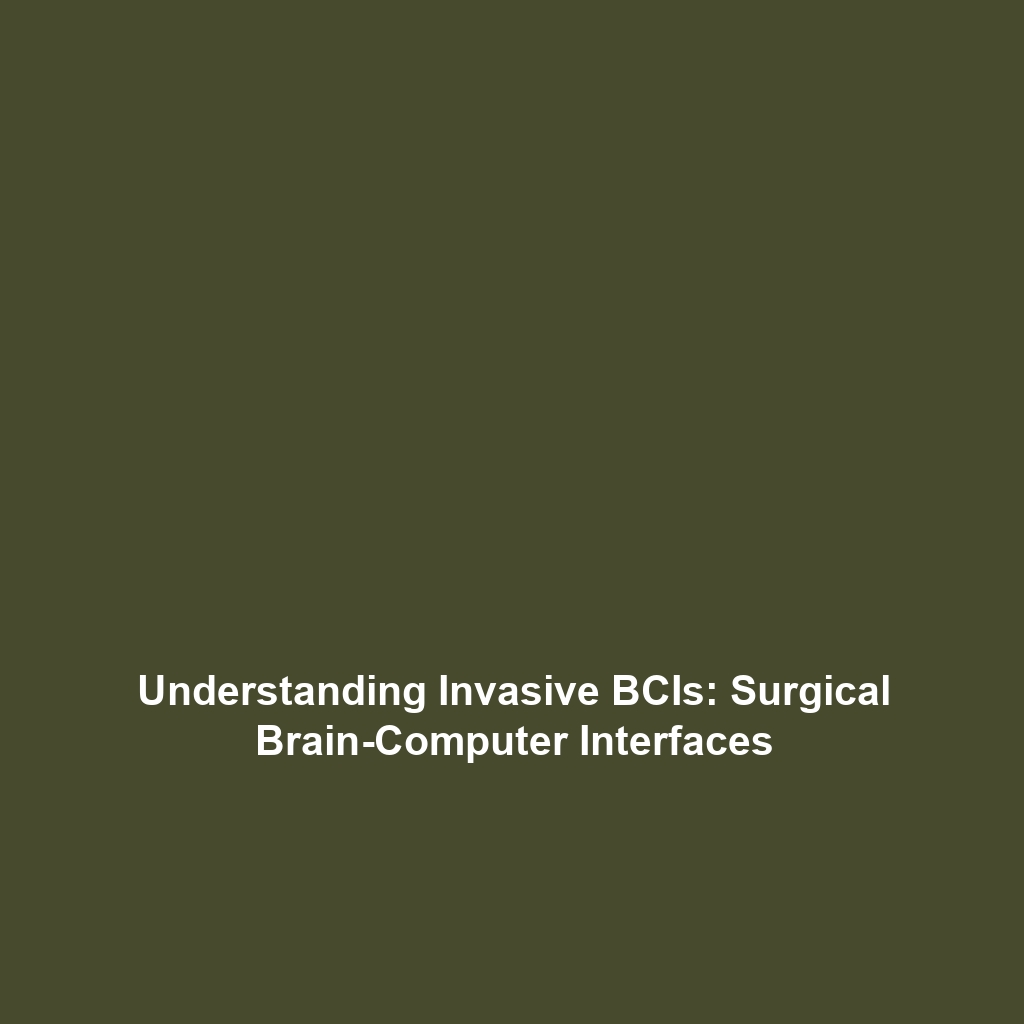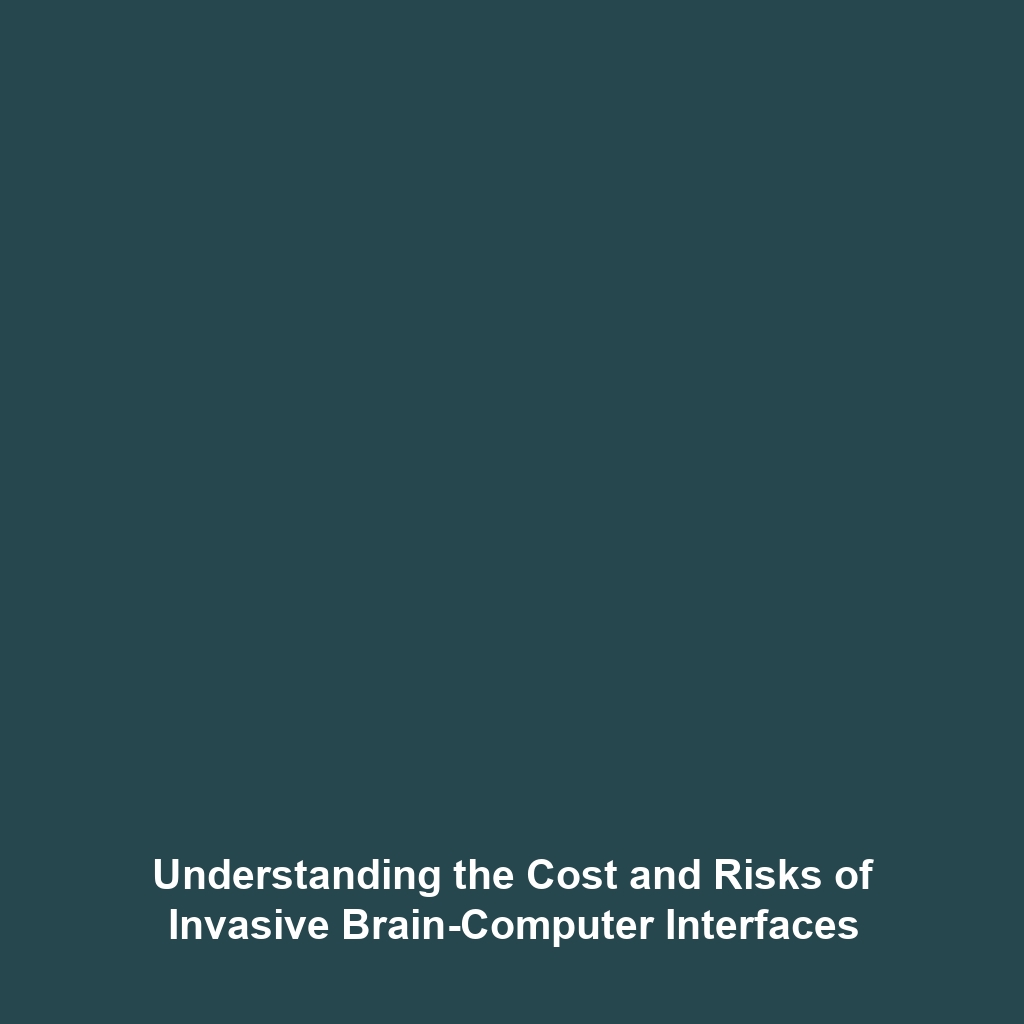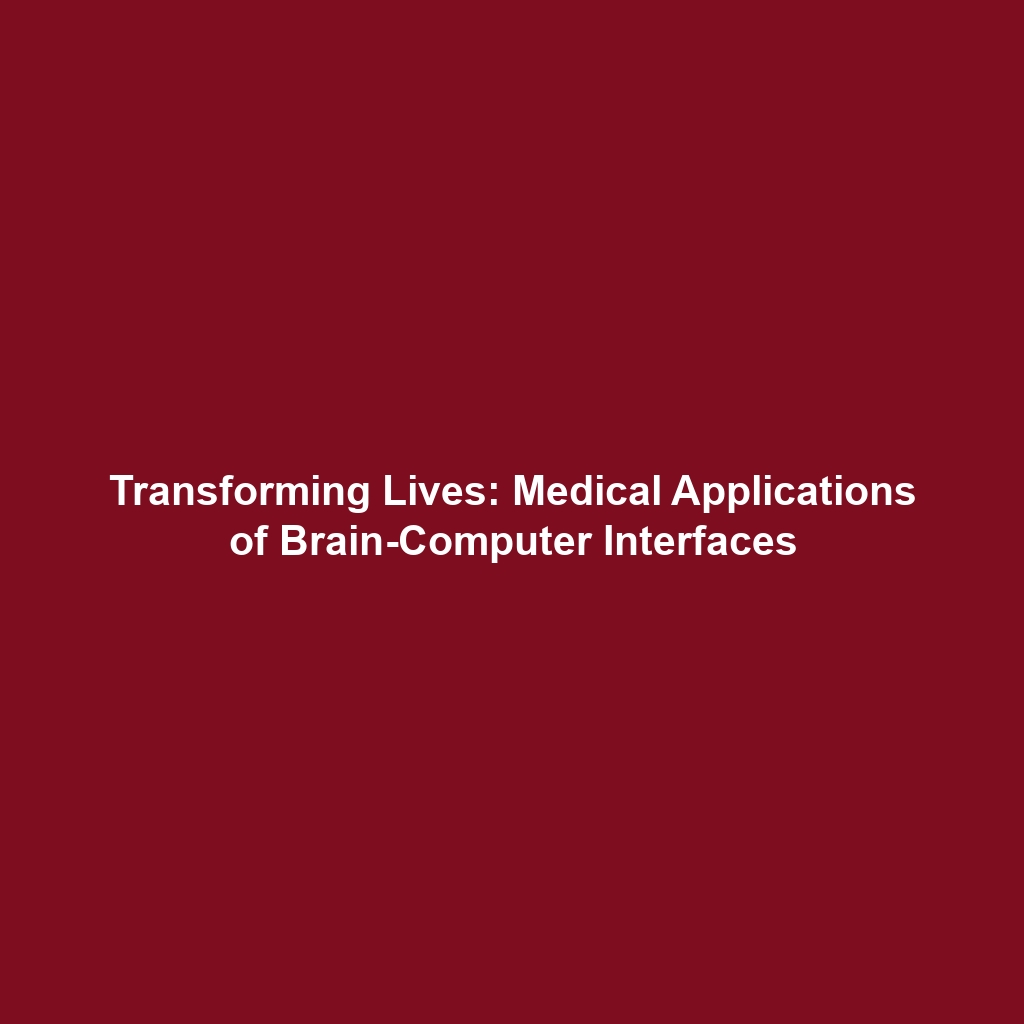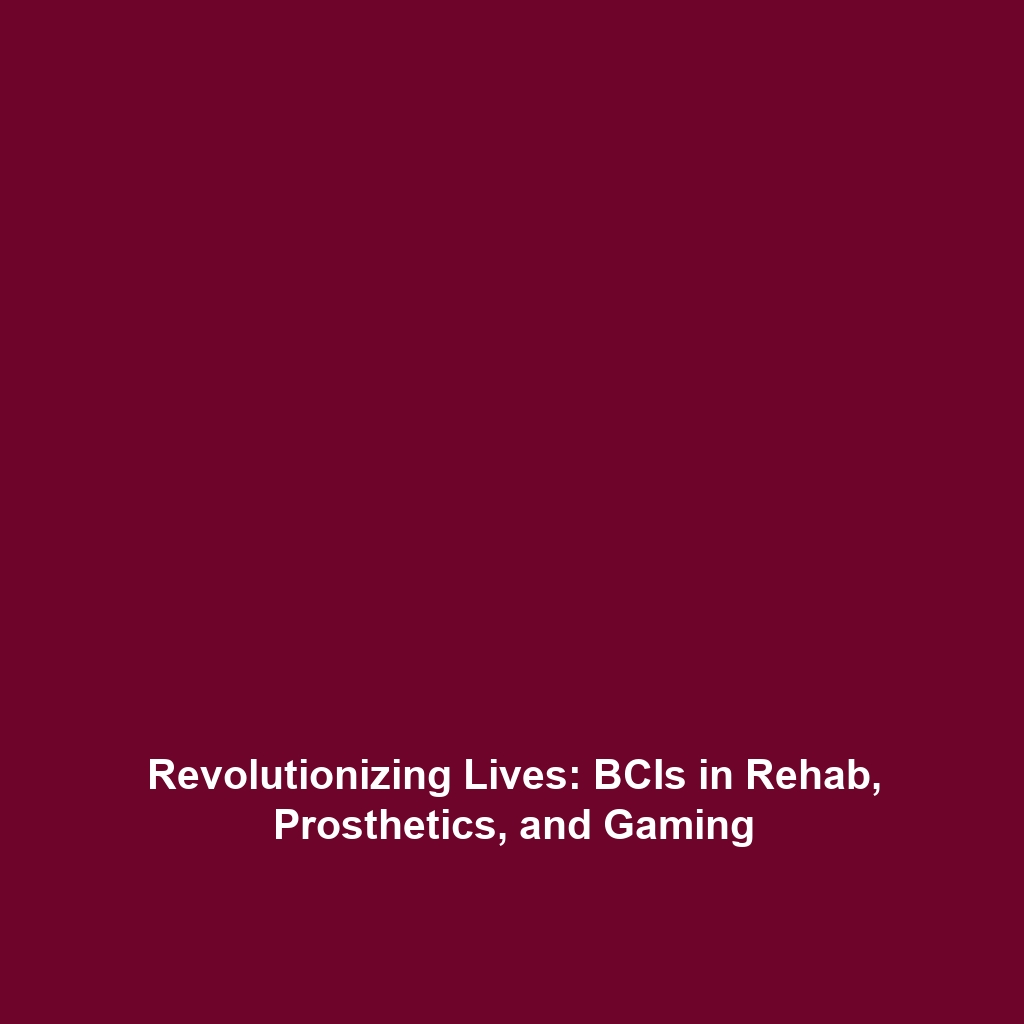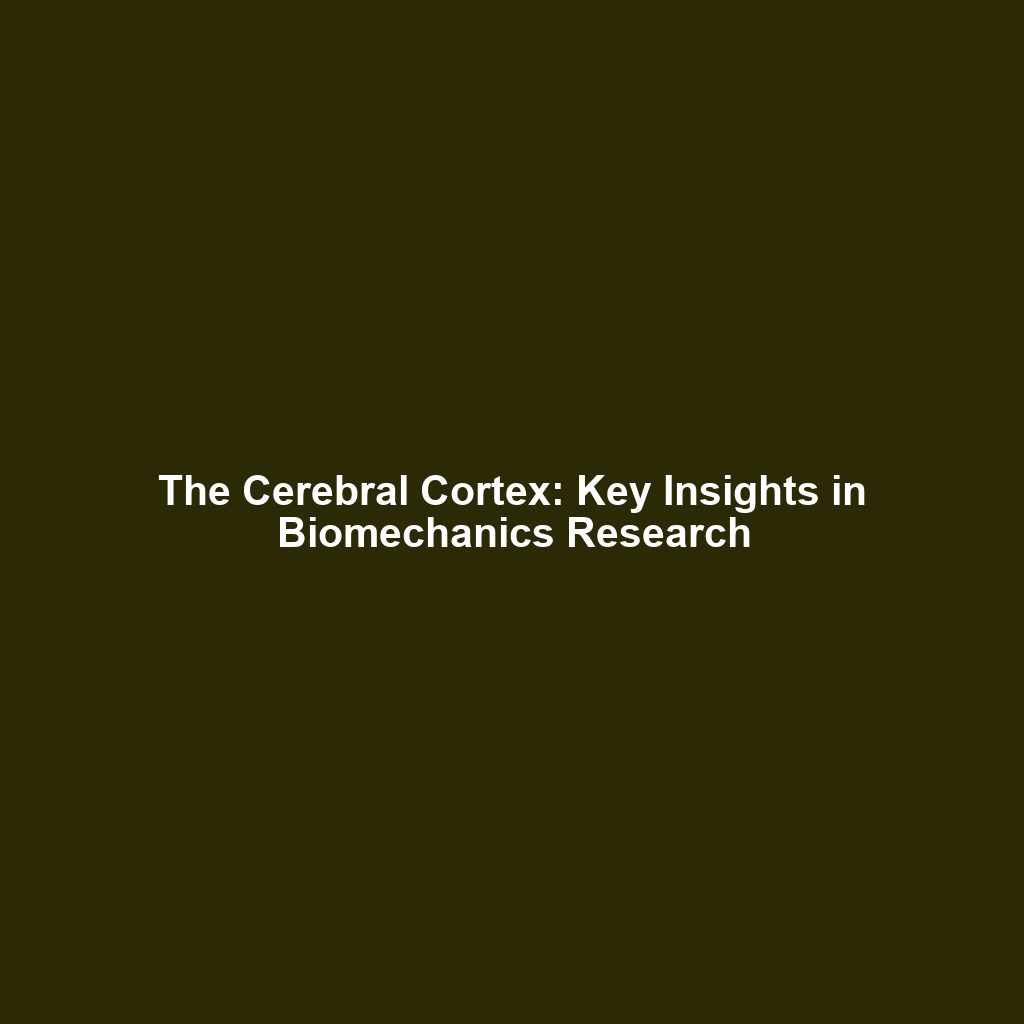Deep Brain Stimulation and Electrocorticography in Brain-Computer Interfaces
Introduction
In the realm of neural engineering, Brain-Computer Interfaces (BCIs) are revolutionizing the way humans interact with technology. Among the notable methods, Deep Brain Stimulation (DBS) and Electrocorticography (ECoG) stand out for their pioneering roles in controlling robotic limbs and facilitating direct communication with the brain. These technologies not only offer therapeutic options for patients with neurological disorders but also empower individuals with paralysis, enhancing their quality of life. This article delves into how these systems relate to BCIs and their significance in advancing neuroprosthetics.
Key Concepts
Both Deep Brain Stimulation and Electrocorticography operate on unique principles that connect neural activity with external devices:
Deep Brain Stimulation (DBS)
DBS involves implanting electrodes in specific brain regions to modulate neural activity. By delivering electrical impulses, DBS can alleviate symptoms of conditions such as Parkinson’s disease and dystonia, while also enabling control over robotic aids.
Electrocorticography (ECoG)
ECoG entails placing electrodes directly on the surface of the brain. This method provides high-resolution data on brain activity, allowing for the development of advanced BCI systems that can translate thoughts into actions, such as moving a robotic limb.
Applications and Real-World Uses
DBS and ECoG systems have transformative applications in the field of neurotechnology:
- Robotic Limb Control: Both DBS and ECoG facilitate the control of robotic limbs, enabling individuals to perform tasks independently.
- Communication Devices: ECoG has been used to create systems that allow individuals with severe speech disabilities to communicate using thought-controlled interfaces.
- Therapeutic Interventions: DBS is widely used to treat movement disorders and is being explored for conditions like depression and OCD.
Current Challenges
Despite their advancements, several challenges persist in the study and application of DBS and ECoG:
- Invasiveness: Both techniques require surgical intervention, posing risks to patients.
- Variability in Response: Individual responses to DBS can vary, necessitating tailored approaches.
- Long-term Impacts: There is limited knowledge about the long-term effects of continuous stimulation or invasive electrode implantation.
Future Research and Innovations
Ongoing research is poised to bring significant innovations in DBS and ECoG technologies:
- Development of closed-loop systems that adapt stimulation based on real-time neural feedback.
- Advancements in materials that allow for less invasive implantation of electrodes.
- Enhancements in computational algorithms to improve the accuracy of translating brain signals into actions.
Conclusion
Deep Brain Stimulation and Electrocorticography are critical components in the evolution of Brain-Computer Interfaces, offering promising avenues for enhancing communication and control. As research progresses, these technologies will continue to reshape therapeutic practices and improve the lives of countless individuals. For those interested in the intersection of neuroscience and technology, staying informed about the latest advancements in BCIs is essential. Read more about the future of neuroprosthetics here.
